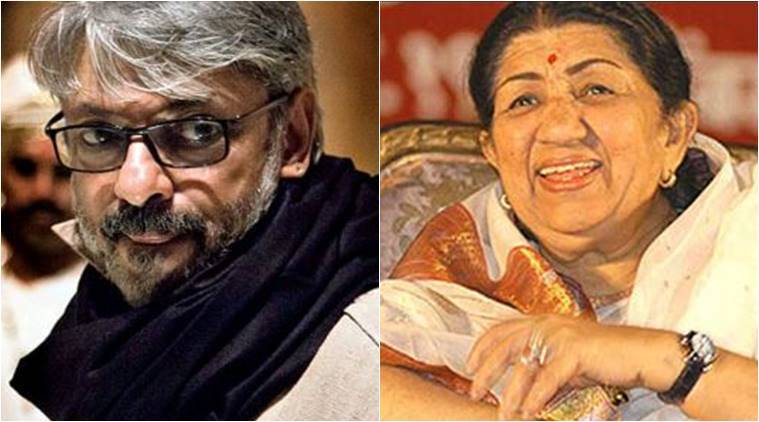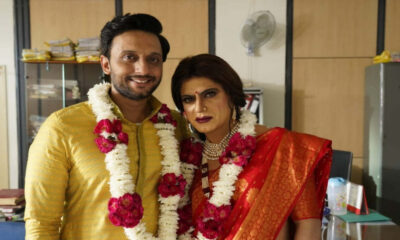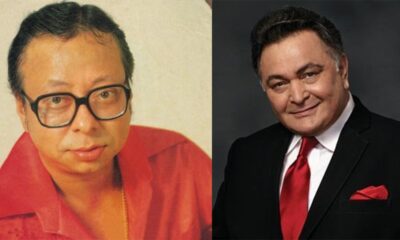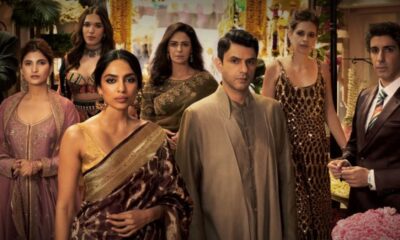Exclusive Premium Content
“Within A Month I lost Both My Idols,” Sanjay Leela Bhansali Cannot Come to Terms With His Loss

Sanjay Leela Bhansali who is gearing up for the release of Gangubai Kathiawadi had tow stop all work when he heard the news.
Says Bhansali , “To lose Lataji so soon after Pandit Birju Maharaj was soul-shattering to me. They are my two all-time idols. Whatever I’ve learnt about cinema is through their art.I’ve learnt EVERYTHING about filmmaking by listening to Lataji voice . When I discover some rare song of hers I feel I’m richer than the diamond merchant.”
A facet of her talent that Bhansali recognizes is how her voice was moulded in every decade. “There’s a different Lata Mangeshkar experience for every decade from the 1940s and 50s to the 1960s, 70s and 80s. It’s fascinating to see how differently she has sung for different composers from S.D. Burman to Madan Mohan to R.D. Burman.Each era has given us an entirely different aura from her voice.”
Lataji’s penchant for perfection took Bhansali’s breath away. “She never lets go of a single word without doing justice to it. Such a frail and delicate voice, and yet so powerful. She has done it all. We cannot have another Lata Mangeshkar. It’s my desire to try and reach her level of excellence through my work.”
Listening to the Nightingale’s song is mandatory in Bhansali’s life. “ Not a day passes when I don’t listen to her….It can’t! It’s the only shield and sustenance I’ve against the incessant blows from the world. Lataji’s voice has healed and nourished me from childhood.”
The filmmaker has observed her minutely. “ She fascinated me as a person…I had the singular privilege of being present during one of her recordings: Kuch na kaho for 1942: A Lve Story when I was an assistant to Vinod Chopra. The white kerchief clutched in her hand, the two pleats with a side-parting in her hair…I knew exactly when she looked up while recording a song….Even when she expressed unbearable emotions her face never got all screwed up and ugly…She’s the most beautiful woman I’ve ever seen…From childhood I’ve been fascinated by her.”
And the fascination began when he was a child. “I remember as a child I’d read up every titbit and biographical morsel that was served up in the back of the long-playing records…I’d hungrily scan magazines for her picture with music directors rather than the heroes and heroines…For me every detail about her was precious…I’ve always been intrigued by this diminutive woman with the most powerful voice in the world.”
Bhansali feels the depths of emotions expressed in that exceptional voice are not easy to fathom let alone explain “ The mystery that she created through the powerful texture of her voice is the most precious mystery of the universe. So many deep emotions expressed with such a straight face! She must be so rich from inside to be able to express feminine beauty in ALL its shades. How she takes up the most complex notes and makes them sound so effortless is something I’ve never understood. How did she do it? Was she as powerful as a person as she was as an artiste? I don’t know….”
Bhansali’s fascination for the Nightingale is endless. “Lataji was very mystical…mythical for me. The voice quality is so exceptional she has never been a real person for me. I can’t imagine any actual humanbeing being capable of such flawlessness…No,I’ve never been tempted to examine the actual person beyond the persona. Her work will take me 13 lifetimes to unravel the enigma of her creativity. The person can wait…Sometimes she’s so maternal, sometimes so devotional…. Then so sensual…. Lata Mangeshkar epitomizes so many different things to so many millions…”
To know the person behind the voice is task that Bhansali is not up to. “Very few have dared to cross the sanctity of her music and try to know the real person. That aura she wore like a second sleeve is so overpowering… I met her when she came to the recording studio to sing R.D. Burman’s Kuch na kaho in 1942 A Love Story . I was behind her when she came out of her car. I froze. I just kept looking at here. She looked so beautiful in her diamonds and white sari. When she was escorted to the lift I followed behind. Obviously I didn’t have the courage to get into the lift with her. I ran up the stairs as fast as possible…As I watched her sing I couldn’t believe that any humanbeing could generate so much beauty harmony and goodness through her vocal chord. When she left people outside who had nothing to do with the recording, just stood up spontaneously. That’s the kind of aura she possesses. How can such a frail figure can exude such power! Either people dive for her feet or stand up in supreme reverence…”
Then Bhansali finally got an opportunity to meet her personally. “You took me to meet her. Those two hours with her will remain with me forever.The way she spoke, listened, paused and ruminated…will remain with me forever. Whenever I passed her home in Peddar Road I wanted to get one glimpse of her on that famous little balcony of her home.”
Bhansali feels incomplete as a filmmaker . “I kept hoping maybe one day she’ll sing for my film. My work is so incomplete without her voice…Once she came THIS close to actually singing for my film. She drove towards the recording studio where we waited like excited schoolboys with an aarti ka thali, but she had to turn back because of heavy rains….What is not meant to be, won’t be… Through her songs she taught me that excellence perfection and beauty have no full stops. We’ve found it long back in her voice. She’s still searching.”
As a music composer Bhansali admits his greatest inspiration impetus and motivator is Lata Mangeshkar. “My greatest compliment as a music composer came to me from Lataji for the music of Bajirao Mastani . Lataji has inspired all my films. She told me that the Latpat latpat opening of my Pinga song was from her song in V Shantaram’s Amar Bhoopali.Lataji said she liked my songs and the way I’ve filmed them. Then she affectionately said, ‘Aapne mera Latpat latpat utha liya.’ I humbly submit that it is indeed true.Bajirao Mastani was a tribute to the voice of Lataji, the music of Laxmikant-Pyarelal and the cinema of K Asif and V Shantaram.I am very proud to have absorbed all these influences.”
++++++
Lataji On Sanjay Leela Bhansali: “I have always loved the music of his films. Earlier it was Ismail Durbarji who would do the music. Now Bhansaliji is doing his own music,which is a very good thing. I believe a filmmaker has to be a musician himself to understand the quality of music needed in his films. Bhansaliji has that quality. He has a deep knowledge of music and songs,and of the Indian classical heritage and culture. The song Ghoomar in Padmaavat has revived the appeal of the Ghoomar dance form. People are dancing to it all over the world after watching Deepika Padukone’s Ghoomar dance,” says Lataji, comparing Sanjay Leela Bhansali to none other than Raj Kapoor.I believe Bhansaliji has a music sense as sharp as Raj Saab. Raaj saab was a complete musicians. He played the table, the harmonium and the piano . He composed songs and sang them in his own voice before handing them over to professional playback singers. He could’ve easily scored the music in his films. But he chose not to take credit for the music in his films.”
According to Lataji there is one other filmmaker who could rival Raj Kapoor’s music sense. “He was Raj Khosla.Like Raj saab he too could play several instruments and he sang beautifully. In fact he came to Mumbai to become a singer but ended up being a filmmaker. I remember Raj Khosla singing Allah-o-Akbar in his own voice. He could have given the playback singers a run for their money.I am sure Bhansaliji also sings well. The only way a filmmaker can explain to a singer what he wants to express through his song, is to sing it himself.”
Lata Mangeshkar was deeply impressed by Sanjay Leela Bhansali’s Ghoomar song in Padmavat.“I saw the song aand I was again stuck by Bhansali’s visual sense. It is unmatched by that of any other filmmaker in this country,” says Lataji, not prone to extremes of praise unless provoked .
So moved was Lataji with Bhansali’s artistry that she dug into her own memory of painting as reference point. “I’ve not seen the same stunning use of colours in any cinema. But I’ve seen it in the paintings of the French painter Claude Monet.”
Lataji was a painter herself.
She reveals shyly, “I used to paint. My sister Usha paints and so does my nephew Baijnath.In fact once when Baijnath and I were watching Bhansaliji’s film Black we had noticed his kinship to Monet for the first time. And in the Ghoomar song of Padmaavat, the similarities in colour to Monet are unmistakable.”








